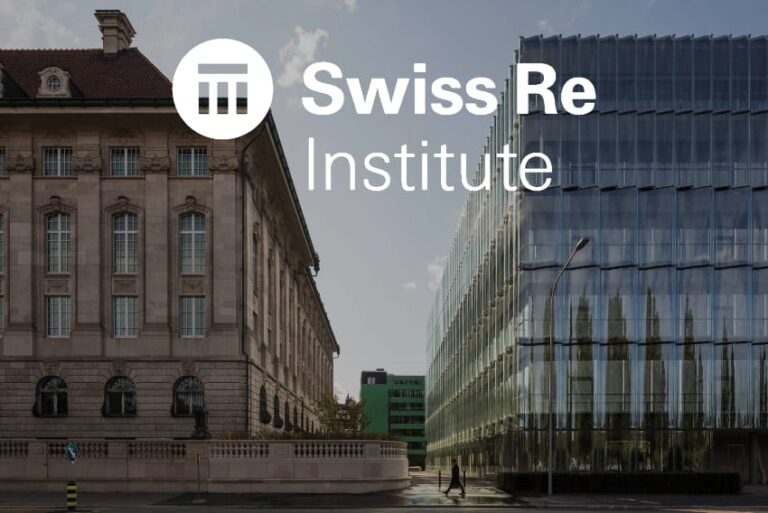Insured losses from natural catastrophes are expected to continue to grow faster than economic growth, and while the insurance and reinsurance market is currently recalibrating its models to meet the rising loss trends, Swiss Re explains that more resources are needed to meet the growing need for disaster protection.
As a result, profitability for non-life insurers is expected to improve, and with the global economy remaining strong, the insurance industry is expected to continue to expand.
Jerome Haegeli, Group Chief Economist at Swiss Re, commented on the state of global insurance markets: “The insurance industry has overcome the challenges of the past few years to reach a new equilibrium. The global economy is performing better than expected, which should lead to increased demand for insurance. The life insurance sector in particular is an area to watch, as rising interest rates will boost consumer demand for investment income and annuities, providing a stable retirement income for more people.”
Kera MacDonald, chief underwriting officer at Swiss Re Corporate Solutions, added: “Commercial insurance represents nearly half of the total P&C market. We expect commercial P&C insurers to remain profitable in 2024 as rate trends keep lines such as property sustainably priced. The industry has seen single-digit rate increases for property business this year. For P&C, we are seeing an overall market softening across most long-tail lines.”
However, reinsurers warned in the report that insured losses from natural catastrophes continue to grow faster than economic growth, which Swiss Re sees as a challenge and a driver of the need for resources and capacity for growth across the industry.
Swiss Re noted that large losses from natural disasters could impact the underwriting cycle.
The ability to support the insurance and reinsurance industry through major loss experiences is key to keeping the industry more stable, to the benefit of end customers.
Swiss Re’s sigma report states that “to better absorb the impact of potentially very large economic losses from disasters and thereby strengthen societies’ resilience, the industry needs to continuously adapt to the changing risk environment, including urbanization and the associated accumulation of asset values, as well as the effects of climate change.”
While rising trends in natural catastrophe loss costs have led the industry to recalibrate models and risk tolerances, Swiss Re expects natural catastrophe risk exposure to continue to increase at a CAGR of 5% to 7% in the medium term.
This also means that the insurance industry needs to expand its capital base to meet customer protection demands and rising loss cost needs, while exposure outpacing growth also poses societal challenges.
However, this is not actually a new trend, with Swiss Re pointing out that over the past 30 years, insured losses have grown at an average annual rate of 5.9% in real terms, compared with global real GDP growth of 2.7%.
However, this remains a continuing issue, and in a world where climate-related weather events are, in some cases, increasingly impactful, it is unclear whether the reinsurance market will be able to provide a stable capital base to support its clients without the need for greater supporting risk transfer capacity and enhanced risk mitigation efforts across the economy.
“The industry needs to scale up resources to meet growing demand for financial protection against evolving natural catastrophe risks,” Swiss Re explained.
“While there are opportunities for the industry, insurers also face challenges with losses from natural catastrophes increasing faster than GDP. Affordability of insurance is also affected in many parts of the world, which could widen the protection gap,” he added.
All of this requires investment in capacity to support the insurance industry amid growing risks from natural disasters, and in mitigation measures to reduce the amount of losses from source.
Swiss Re explains: “In 2023, around 62% of all catastrophe losses will be uninsured. Closing the protection gap requires reducing expected losses and/or increasing insurance coverage. Reducing the likelihood of losses also requires climate change mitigation, loss reduction and prevention and adaptation measures to minimize exposure and vulnerability to hazards, both at a societal level (e.g. enforcing building codes) and at the individual asset level.”
It adds: “By reducing the probability of loss, the insurance industry can continue to play a role in covering outstanding risks even after mitigation and adaptation measures have taken effect. Reducing future vulnerability and increasing resilience can lower the cost of insurance coverage and increase take-up of risk protection cover. Furthermore, strengthening risk assessment and ensuring premium rates are commensurate with increased risk will be key to safeguarding the economic sustainability of the industry.”
Swiss Re states that in the medium to long term, demand in the non-life insurance market will be supported by an “increasing need for disaster compensation.”
This points to a continuing need for efficient sources of insurance and reinsurance risk capital, as well as opportunities to devise business models that can leverage capital market demand for natural catastrophe risk and partner with traditional insurance businesses to expand coverage and reduce volatility.


